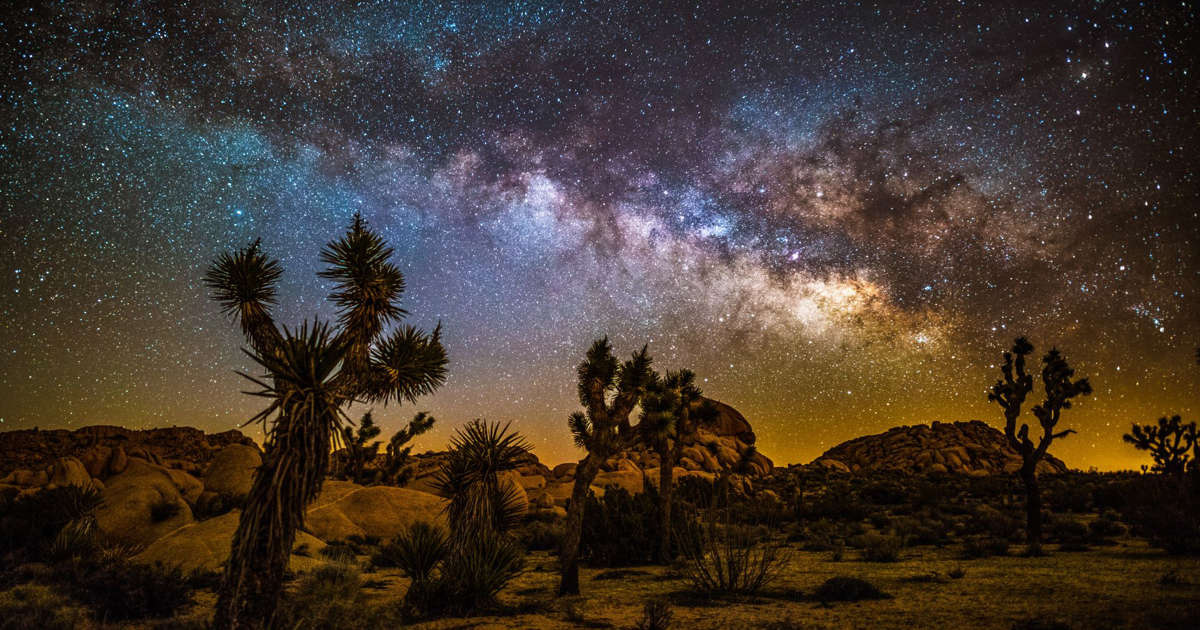[ad_1]
© Getty Images
null
March 2023 is a great time to photograph the solar system, but don’t waste any time. As the month begins the two brightest planets in the night sky – Venus and Jupiter – will appear to pass so close to each other that it will be possible to capture them both with a long lens. What’s more, it’s a post-sunset event that begins relatively high in the sky at dusk before sinking lower in the southwestern sky, as seen from the northern hemisphere. That makes it perfect for framing beside trees, mountains or buildings when they’re close to the horizon.
March is also the last month until September when the nights are longer than the days and when the northern lights can be at their most intense. Add some beautiful views of a crescent moon and the rise of a full ‘Worm Moon’ and March 2023 has much to offer sky-photographers.
Wednesday, March 1: Venus and Jupiter appulse
When two planets appear to pass close to each other from our point of view on Earth, the event is called a conjunction. When it’s super-close, it’s called an appulse. That’s what happens tonight when the ‘Evening Star’ and the gas giant will appear to come to within just half a degree of each other. That’s less than half the full moon’s width and the closest they’ll appear to be for several years. It’s an annual event, but a special one in 2023, though, it’s worth noting that Venus will be shining much brighter than Jupiter. Pick various lenses for different effects and try a few seconds at ISO 200 to 400 with the lens at f/2.8 to f/4.
Tuesday, March 7, 2023: full ‘Worm Moon’ rising in a perfect alignment
There is always something incredible to photograph in the night sky each month. Thanks in part to our natural satellite in space, the moon. Tonight is the night it will rise fully illuminated opposite the sun, showing an orange-looking lunar surface as the moon rises in the eastern sky. Check your local moonrise time and get into position about 10 minutes before. In North America, the moon will rise between 20 and 30 minutes after sunset, while in the UK and northern Europe, moonrise and sunset will occur at almost precisely the same time. To capture the rising full moon’s splendor use a 70-300mm lens, a tripod and a remote shutter release.
Read: How to photograph the full moon
Tuesday, March 14 2023: March’s dark sky window opens
Tonight the moon reaches its last quarter phase, rising after midnight to leave the night sky virtually moonless. That makes the next seven nights through New Moon on Tuesday, March 20 perfect for dark skies and deep-sky astrophotography.
Monday, March 20: spring equinox
Today’s spring equinox marks the moment when the sun is above the equator, meaning night and day are the same lengths across the globe. That’s not something you can photograph per se, but it does give you an excuse to take some interesting wide-field photographs of the sunrise and sunset on the equinox. If you’re on the road then equinox-aligned ancient sites include Stonehenge in England, Newgrange in Ireland, Casa Grande in Arizona and Chichén Itzá in Mexico.
Read: The best cameras for astrophotography
Wednesday, 22 March: capture a slim ‘Ramadan moon’
The first sighting of the crescent moon denotes the beginning of each month in the Islamic lunar calendar. This month is particularly auspicious because it signals the beginning of the holy fasting month of Ramadan. Look to the southwestern sky just after sunset and you may be able to spot an incredibly slim crescent moon. If you can’t, come back tomorrow night at the same time and try again, when the crescent will be slightly bigger, brighter and higher in the sky.
Thursday, March 23 and Friday, March 24: Venus and a crescent moon
As the crescent moon increases in brightness and moves higher into the sky it will appear very close to Venus post-sunset for two successive evenings. On Thursday it will be visible just below Venus and on Friday it will be just above. Don’t forget to play with your ISO and exposure settings to try to bring out ‘Earthshine’ on the dark limb of the moon.
Read: When to photograph the moon
Wide-field shot of the month: the Northern Lights
Though the Northern Lights are active all day and all year long, it’s only between September and March in the Arctic Circle when the nights are long enough and dark enough to make dedicated photography trips worthwhile. So this month is your last good chance to spend time at 66°N – where the auroral oval typically hangs out – in northern Norway, Sweden, Finland, northern Canada, and Alaska.
So far, the 2022/2023 winter season has seen plenty of powerful displays of aurora thanks to the sun waxing towards ‘solar maximum’ in 2024 or 2025. Although it’s not guaranteed, the spring equinox on 20 March sees Earth’s magnetic field lines perfectly in sync with the solar wind, which can sometimes mean more reliable and more intense displays of aurora. The only way to see if that comes to pass is to be in the Arctic Circle and stay as long as you can, mainly to maximize your chance of clear skies. Keep an eye on the forecast on the Space Weather Prediction Center.
Read: Where, when and how to shoot the Northern lights
Read more:
• Astrophotography: How-to guides, tips and videos
• Astrophotography tools: the best camera, lenses and gear • The best lenses for astrophotography
• The best star tracker camera mounts
• Best equatorial mounts
• Best deep-space telescopes
• The best light pollution filters • The best CCD cameras for astrophotography
• The best spotting scopes
• The best binoculars • The best microscopes
[ad_2]

